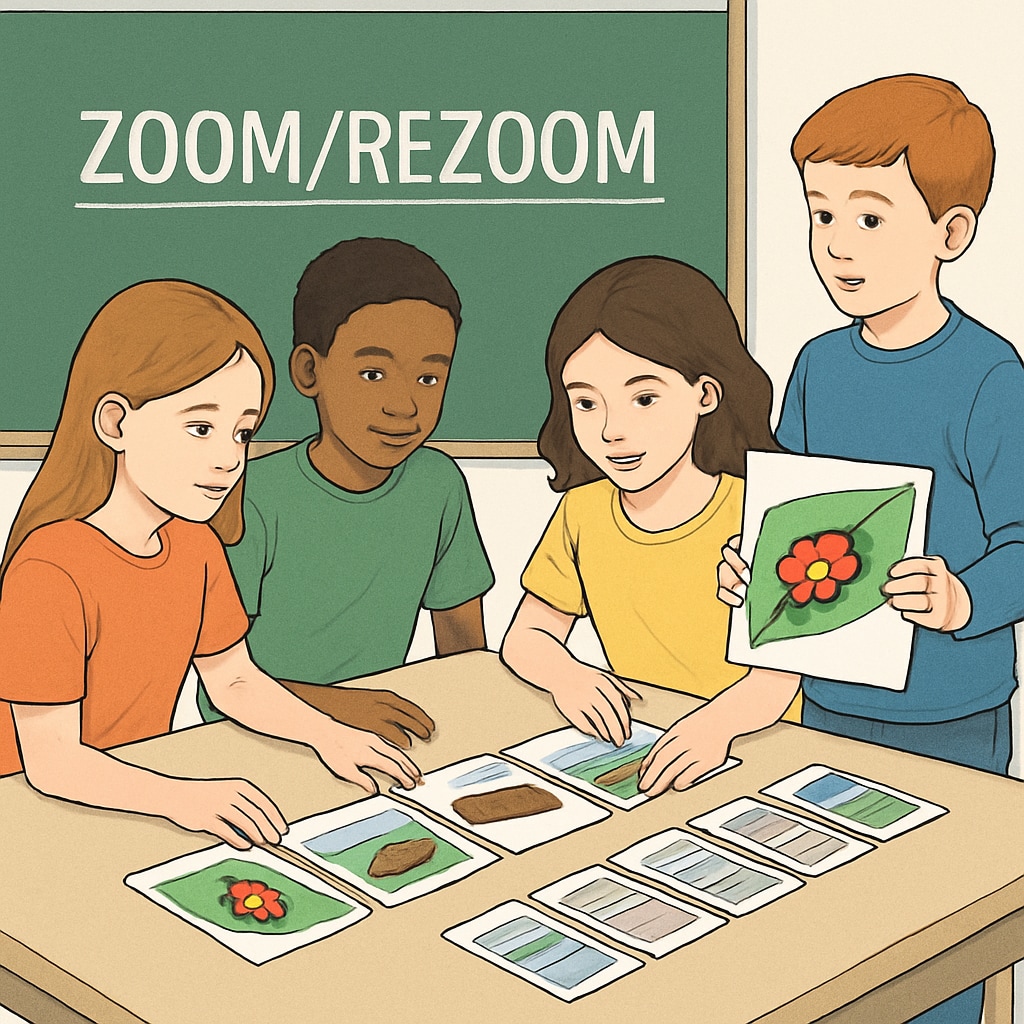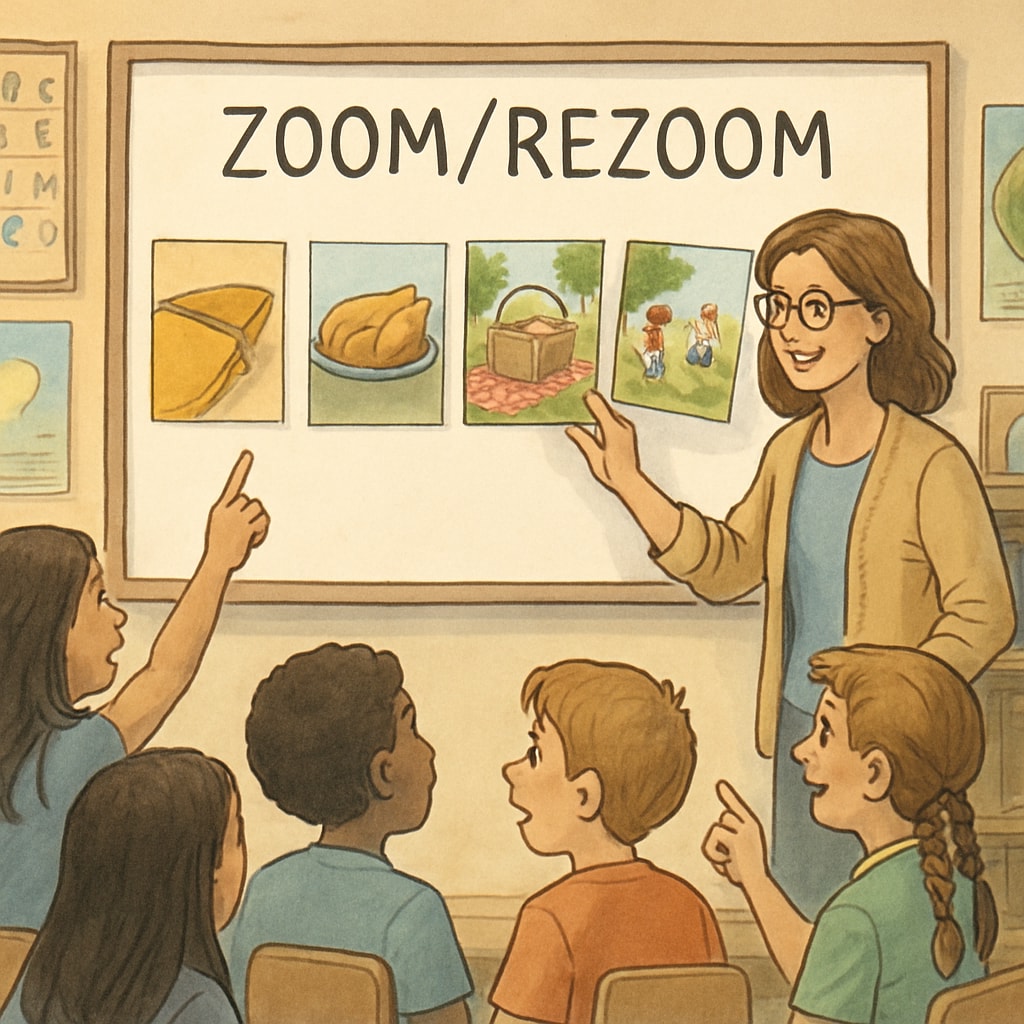In the realm of K12 education, Zoom and ReZoom teaching activities offer an engaging way to foster critical thinking, collaboration, and storytelling among students. However, the effectiveness of these activities largely depends on their proper sequencing. Without a clear sequence guide, educators may face challenges in maintaining the intended learning outcomes, leading to diminished engagement and comprehension. This article delves into the significance of Zoom/ReZoom activity sequencing, explores the consequences of missing guides, and provides actionable strategies to restore the optimal flow for impactful teaching.

The Importance of Sequencing in Zoom/ReZoom Activities
Zoom and ReZoom are interactive storytelling activities designed to help students think critically and see the bigger picture. The concept revolves around a series of images or scenarios that are interconnected in a specific order, creating a narrative that unfolds piece by piece. Proper sequencing allows students to analyze relationships, connect ideas, and build understanding step-by-step.
When the sequence guide is missing or disrupted, students may struggle to grasp the intended narrative. For example, jumping from one part of the story to another without logical progression can confuse learners and hinder the collaborative learning process. As a result, the activity loses its purpose and fails to achieve its full educational potential.
- Encourages logical thinking and problem-solving skills.
- Enhances teamwork by requiring students to work together to complete the activity.
- Fosters creativity and storytelling abilities.
Challenges of Missing Sequencing Guides
When educators attempt to implement Zoom/ReZoom activities without a proper sequence guide, several issues can arise. These include:
- Student confusion: Without a clear order, students may struggle to understand the activity’s flow, leading to disengagement.
- Reduced collaboration: The lack of structure can make it difficult for students to work together effectively.
- Incomplete learning outcomes: Activities may fail to achieve their intended goals, such as improving critical thinking or narrative skills.
For example, educators might inadvertently present the images in a random order, disrupting the narrative and leaving students puzzled about how the pieces fit together. Therefore, having a well-designed sequencing guide is essential to ensure smooth activity execution and optimal learning results.

Rebuilding the Optimal Sequence: Practical Strategies
Restoring the proper sequence for Zoom/ReZoom activities can significantly enhance their effectiveness. Here are some practical strategies educators can use:
- Analyze the materials: If the original sequence guide is lost, review the content of the images or scenarios to identify logical connections.
- Collaborate with colleagues: Other educators who have implemented Zoom/ReZoom activities may have insights or resources to help reconstruct the sequence.
- Seek external resources: Online platforms like Wikipedia and Britannica can provide valuable information and examples.
- Test the sequence: Before introducing the activity to students, test the reconstructed sequence to ensure it flows logically and achieves the desired learning outcomes.
In addition, educators can consider creating a digital version of the sequence guide for easy access and sharing among colleagues. Maintaining a backup of the guide ensures it is not lost in the future.
Resources for Educators
For educators seeking additional support, there are numerous resources available online. Websites dedicated to teaching strategies and activity planning often offer templates, examples, and advice for implementing Zoom/ReZoom activities effectively. Joining professional educator communities or forums can also provide opportunities to exchange ideas and solutions.
By leveraging these resources, educators can confidently restore the sequence of Zoom/ReZoom activities and continue to use them as powerful tools for student engagement and learning.
Conclusion: Proper sequencing is the backbone of Zoom/ReZoom teaching activities. A well-structured sequence guide not only ensures smooth execution but also enhances student comprehension and collaboration. By adopting the strategies outlined above, educators can rebuild the optimal flow of these activities, maximizing their educational impact. Don’t let missing guides hinder your classroom dynamics—start reconstructing today!


